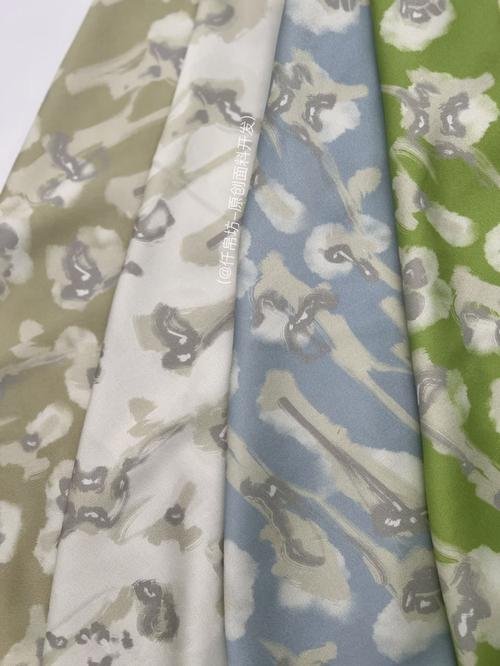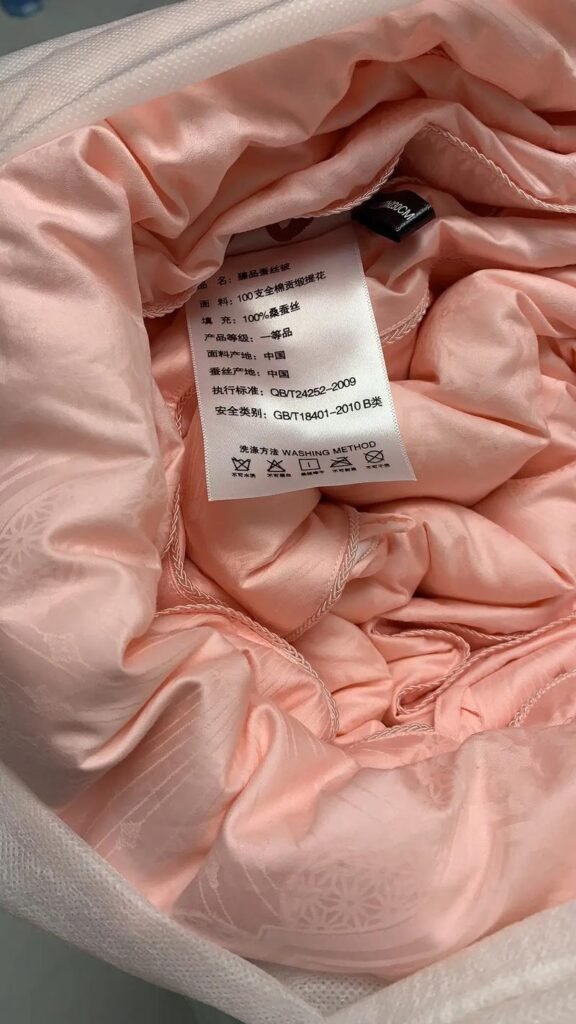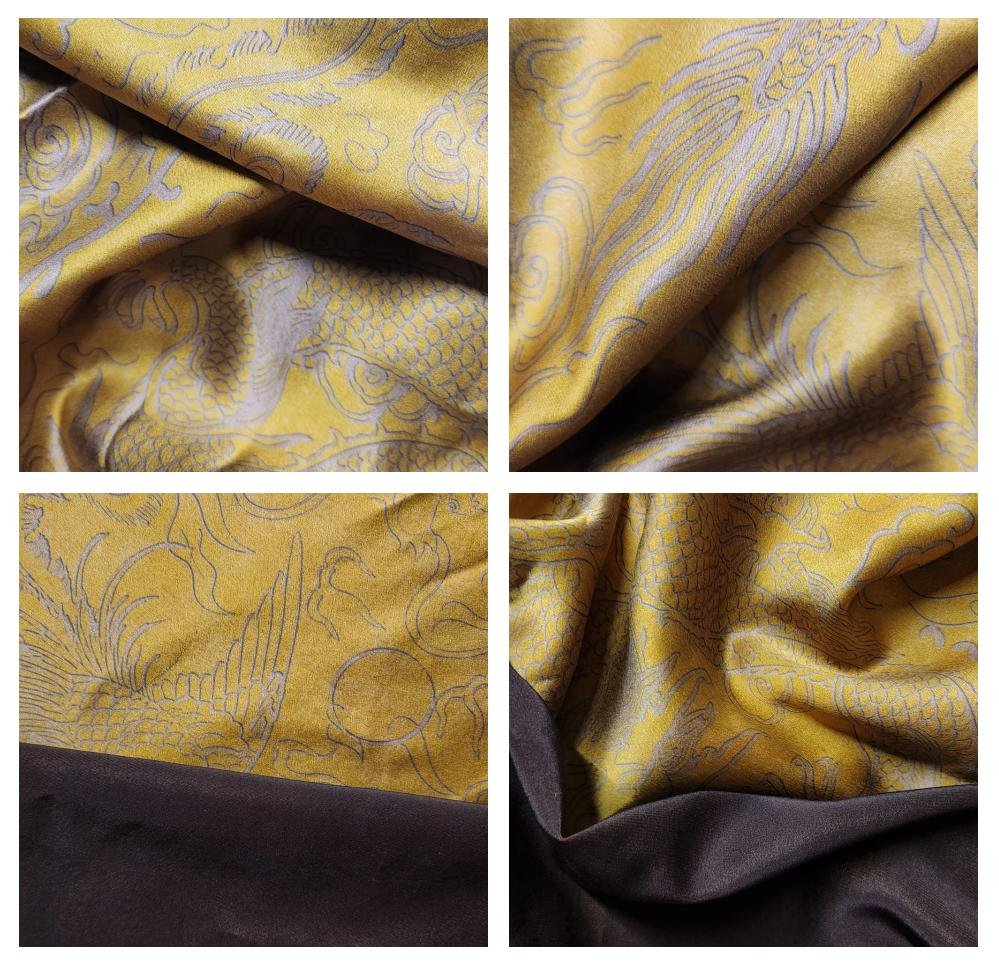
When it comes to luxury textiles, few materials command the same prestige and allure as silk. For centuries, silk has symbolized refinement, exclusivity, and craftsmanship. Today, it remains one of the most sought-after fabrics in the wholesale market, particularly for fashion brands, interior decorators, and home textile manufacturers. However, not all silk is created equal. From 6A to 4A, silk fabrics vary widely in grade, cost, and application, making it essential for bulk buyers to understand how pricing and MOQ (Minimum Order Quantity) strategies work across the spectrum.
The wholesale silk fabric market is primarily driven by grade classifications (6A, 5A, 4A), which directly impact price per meter, quality expectations, and MOQ terms. Understanding how these factors interconnect is key to sourcing the best silk for your brand while staying cost-efficient.
In this guide, we’ll decode the silk grading system, analyze global wholesale price trends, and offer sourcing strategies for B2B buyers who want high-end silk with smart MOQ options. Whether you’re launching a bridalwear collection or sourcing for luxury loungewear, this article will equip you with actionable insights, real-world examples, and critical decision-making tools.
So, how do premium fashion brands balance quality and cost when purchasing bulk silk? Let’s dive into the details behind the grades first.
What Are 6A, 5A, and 4A Silk Grades and How Are They Classified?
Silk grades (6A, 5A, 4A) refer to the quality rating system for raw silk threads, primarily determined by fiber length, thickness consistency, luster, cleanliness, and color uniformity. 6A silk is the highest grade available and is commonly used in high-end fashion, bedding, and premium accessories.
Silk fabric is graded from 4A to 6A based on quality indicators like fiber length, uniformity, and purity. 6A is the highest grade, offering superior luster, minimal imperfections, and higher tensile strength—making it ideal for premium applications.
How the Grading System Works
1. Fiber Length and Uniformity
- 6A silk: Long continuous fibers (often over 750 meters per strand), perfectly uniform in thickness.
- 5A silk: Medium to long fibers, slight variability.
- 4A silk: Shorter fibers, less consistent, sometimes blended.
| Grade | Avg. Fiber Length | Thickness Uniformity | Common Uses |
|---|---|---|---|
| 6A | >750m | Excellent | Luxury fashion, bridalwear, bedding |
| 5A | 600–750m | Good | Scarves, mid-range apparel |
| 4A | 500–600m | Moderate | Entry-level silk garments |
2. Color and Cleanliness
- 6A silk is bright white and free of impurities.
- Lower grades may contain natural yellow tint or residual sericin (a protein glue from silkworms).
3. Origin Matters
- Chinese silk dominates the high-end grade (especially Suzhou and Zhejiang).
- Indian and Thai silk often uses alternative classification systems but still aligns in quality roughly with A-grade definitions.
4. Luxury Brand Requirements
Luxury bedding brand “Mulberry Fields” specifies only 6A 19 Momme Mulberry Silk in their BOM (Bill of Materials) due to its strength and sheen. Their reason: the client demographic demands “visible opulence”—something lower grades fail to deliver under showroom lighting.
How Do Silk Fabric Prices Vary by Grade in the Wholesale Market?

The wholesale price of silk fabric is heavily influenced by grade. As expected, 6A silk commands the highest prices, but the gap between each grade is not always linear—it can spike based on market demand, silkworm harvests, and spinning methods.
6A silk is the most expensive grade, typically ranging from \$32–\$45 per meter wholesale, while 5A and 4A silk range from \$20–\$30 and \$12–\$18 respectively. Price differences reflect fiber quality, origin, and production consistency.
Silk Fabric Price Comparison Table
| Silk Grade | Avg. Wholesale Price (USD/meter) | MOQ (Meters) | Application Range |
|---|---|---|---|
| 6A | \$32–\$45 | 50–100 | Luxury bedding, bridalwear |
| 5A | \$20–\$30 | 100–200 | Dresses, scarves, accessories |
| 4A | \$12–\$18 | 200+ | Entry-level garments, linings |
1. Why Does 6A Cost More?
- Fewer defects → less waste
- Higher tensile strength → better durability
- More yield per kilogram → less production loss
- More uniform dye uptake → better finish
2. How Supply Chain Affects Pricing
- Raw silk cocoon supply varies seasonally.
- Degumming process for 6A is costlier due to the demand for cleanliness and strength retention.
- Labor costs in China for spinning and finishing have also increased post-2022.
3. Regional Price Benchmarks
| Region | 6A Silk Price (USD/meter) | Source Comments |
|---|---|---|
| Suzhou, China | \$34–\$40 | Highest volume & quality production zone |
| Bangalore, India | \$28–\$33 | Slightly coarser texture |
| Bangkok, Thailand | \$25–\$30 | Rich color but inconsistent weaving |
4. Blended Orders
Brands often blend 5A and 6A in one order—using 6A for front-facing panels (like collars or pillowcases) and 5A for less-visible parts to control cost while maintaining premium feel.
Which Factors Influence the Cost of Wholesale Silk Fabric Globally?
Wholesale silk prices are dynamic and influenced by a complex interplay of environmental, economic, and supply-chain-related factors. B2B buyers need to understand not only grade-based pricing but also broader market trends that affect silk availability and cost structures globally.
Global silk prices are influenced by silkworm cocoon supply, labor costs, seasonal harvests, trade policies, and demand from the fashion and home textile industries. Price spikes often coincide with poor harvests or geopolitical disruptions.
Key Pricing Drivers in the Silk Fabric Wholesale Market
1. Cocoon Supply and Sericulture Output
Silk originates from silkworm cocoons—typically Bombyx mori—which are vulnerable to weather conditions, pests, and diseases.
| Year | China Raw Cocoon Output (in tons) | Price Volatility |
|---|---|---|
| 2020 | 602,000 | Stable |
| 2021 | 525,000 | +7% price increase |
| 2022 | 470,000 | +13% price spike |
- Droughts in Sichuan and floods in Guangxi (2022) reduced cocoon supply by \~10%, pushing 6A fabric prices up by 12–15% globally.
2. Labor and Processing Costs
Silk is still a labor-intensive textile. The process includes:
- Cocoon boiling & reeling
- Degumming (removing sericin)
- Dyeing and finishing
Higher wages in China and stricter environmental policies are pushing processing costs upward, especially in high-grade facilities.
3. Exchange Rates & Trade Tariffs
- The USD/CNY exchange rate directly affects international purchasing power.
- U.S. tariffs on Chinese textiles (up to 25% on some HS codes) increase costs unless suppliers use bonded warehouse exports or origin-shifting methods.
4. Consumer Demand Shocks
- The COVID-19 pandemic caused a dip in silk demand for apparel.
- Post-pandemic (2023 onwards), demand surged for loungewear and bedding, driving up prices by 20% in high-grade categories.
5. Sustainability Premium
Eco-conscious brands are now sourcing GOTS-certified organic silk or peace silk, which come with a 25–40% price premium due to limited supply and ethical harvesting.
What MOQ (Minimum Order Quantity) Strategies Are Used by Silk Fabric Manufacturers?

MOQ—Minimum Order Quantity—is a critical component in wholesale transactions. It defines the smallest amount a buyer must purchase per order or per color. Silk manufacturers use MOQs to protect margin, streamline production, and reduce waste. However, progressive factories offer flexible MOQ options based on buyer type and grade.
Silk fabric MOQs typically range from 50 meters for 6A grade to 200+ meters for 4A grade. Some manufacturers offer lower MOQs with surcharge or pre-dyed inventory options for small or custom orders.
MOQ Structures and Customization Flexibility
1. MOQ by Grade and Fabric Type
| Grade | MOQ (Per Color) | MOQ (Custom Color) | MOQ (Digital Print) | Comments |
|---|---|---|---|---|
| 6A | 50–100m | 100–200m | 30m | Smaller runs allowed due to premium margins |
| 5A | 100–200m | 200–300m | 50m | Bulk orders favored |
| 4A | 200–300m | 300m+ | 100m | Ideal for budget sourcing |
- Digital or reactive printing often comes with lower MOQs, as it uses pre-treated white base silk.
2. MOQ Adjustment Tactics Used by Manufacturers
- Surcharge Flexibility: Factories may allow a 30–50m order if buyers pay a small-batch upcharge (10–20%).
- Stock Program Options: Pre-dyed silk fabric in 6A or 5A is often available with no MOQ or 5m MOQ.
- Shared Dye Lot Solutions: Factories can batch small orders into larger dye runs by grouping similar colors across clients.
3. Real Buyer Insight
SzoneierFabrics recently fulfilled a custom 6A silk lining order of just 60m for a Canadian lingerie brand with a 12% surcharge and 10-day delivery. The client prioritized fast prototyping over bulk pricing and appreciated the low-MOQ flexibility for a high-ticket SKUs trial.
4. MOQ Strategy Tips for B2B Buyers
- Request a “MOQ by grade” sheet from your supplier upfront.
- Ask about print-on-demand MOQ vs woven MOQ differences.
- Negotiate better MOQs by bundling multiple colors or styles under one PO.
How Can B2B Buyers Optimize Bulk Silk Purchases Without Sacrificing Quality?
For B2B buyers, purchasing silk in bulk is a delicate balance between budget, brand integrity, and supply reliability. Whether you’re a startup designer or a large-scale importer, smart buying strategies can help you optimize cost per meter while maintaining the level of quality your customers expect.
B2B buyers can reduce silk sourcing costs without sacrificing quality by negotiating split-grade orders, using factory stock programs, bundling SKUs, and scheduling purchases during low-demand seasons.
Smart Sourcing Strategies for Silk Fabric
1. Use Split-Grade Sourcing
- Use 6A silk only for visible or luxury parts of your product (e.g., pillow fronts, collar panels).
- Use 5A or 4A silk for non-visible lining, internal padding, or trims.
| Component | Suggested Grade | Justification |
|---|---|---|
| Pillowcases (top side) | 6A | High sheen, smooth skin feel |
| Lining (inside coat) | 5A | Still soft, less visible, cost-saving |
| Neck label lining | 4A | Minimal visibility |
2. Buy During Off-Peak Periods
Prices drop during off-season periods, usually:
- February–April (post-Lunar New Year, pre-summer production)
- September–October (after fashion season sampling rush)
3. Leverage Factory “Stock Lots” or Overruns
Some factories like SzoneierFabrics maintain a “Ready to Ship” catalog:
- 6A silk fabrics in limited colors with no MOQ
- Up to 20–30% cheaper than fresh dye runs
- Ideal for sample orders, seasonal trials, or small-batch production
4. Negotiate Bundled Pricing
Instead of 1 large PO for a single fabric, negotiate:
- A combined order of multiple fabrics
- One consolidated dye run for multiple SKUs
- Payment terms that spread over 30–60 days
Real-world Example: A mid-size UK bedding brand ordered 1,000m of silk in four colorways (250m each), leveraging Szoneier’s dyeing capacity to save 15% per meter on shared dye costs.
5. Ask for Fabric Swatch Books
A professional swatch book allows you to:
- Compare grades, finishes, and dye accuracy
- Reduce the risk of reordering the wrong quality
- Negotiate long-term contracts with visual accuracy
Do 6A Silk Fabrics Justify Their Higher Wholesale Price?

Yes—for many product categories and brand positions, 6A silk absolutely justifies its premium. The added cost reflects the top-tier craftsmanship, consistent fiber length, flawless finish, and rich luster, all of which influence the consumer’s tactile and visual experience. However, its justification depends on your product’s market positioning.
6A silk is worth the higher price for luxury-focused products due to its superior strength, uniformity, and softness. It offers better dye retention, longer durability, and higher consumer perceived value—ideal for bedding, bridalwear, and high-end apparel.
When Is 6A Silk Worth It?
1. By Product Category
| Product Type | 6A Recommended? | Reason |
|---|---|---|
| Bridal Gowns | ✅ Yes | Needs high luster, smoothness, luxury appeal |
| Silk Pillowcases | ✅ Yes | Direct skin contact, high consumer expectations |
| Casual Scarves | ❌ Optional | 5A can suffice for casual or printed styles |
| Inner Linings | ❌ Not needed | 4A or 5A preferred for cost efficiency |
| Designer Loungewear | ✅ Yes | Wearability, softness, and drape matter |
| Sleep Eye Masks | ✅ Yes | Small product but high tactile sensitivity |
2. Consumer Perceived Value
Research from McKinsey & Co. on luxury textiles shows:
- Products made with 6A silk received 22% higher average unit pricing
- Return rates were 19% lower due to fewer complaints about feel or appearance
3. Color Fastness and Longevity
- 6A silk absorbs dye more evenly → better color brilliance
- Higher tensile strength → longer life even after washing
4. Counterpoint: When You Might Not Need 6A
- Fast fashion brands may opt for 5A due to margin pressures
- Inner linings or product interiors may not benefit from the 6A quality
- Promotional items (like gift bags or pouches) may not justify the investment
A Japanese kimono maker insists on 6A 22 momme charmeuse for traditional wear because it enhances ceremonial value. On the other hand, a California loungewear brand switches between 5A and 6A based on seasonal capsule drops to protect margins.
What Are the Best Use Cases for Each Grade of Silk Fabric in Product Development?
Choosing the right silk grade isn’t just about quality—it’s about aligning your product goals with performance, aesthetics, and cost-efficiency. Each silk grade (6A, 5A, 4A) has distinct characteristics that make it suitable for specific applications in fashion, home, and accessories.
6A silk is ideal for premium garments and bedding, 5A works well for mid-range fashion and accessories, and 4A is best suited for entry-level or internal textile applications like linings or trims.
Grade-by-Use Matrix for Silk Fabric
1. Use Cases for 6A Silk
| Product Type | Details |
|---|---|
| Luxury Bedding | Used in pillowcases, sheets, and duvet covers for its shine and breathability |
| Bridalwear & Eveningwear | Chosen for its luster, smooth drape, and elegance |
| Scarves & Kimonos | Often in 19–25 momme weight for refined look |
| Sleepwear & Robes | High comfort and touch-sensitive design |
| Premium Accessories | Eye masks, scrunchies, lingerie trims |
6A silk works best when the consumer will directly touch or visually scrutinize the product.
2. Use Cases for 5A Silk
| Product Type | Details |
|---|---|
| Casual Blouses & Dresses | Soft, comfortable, but slightly lower sheen than 6A |
| Mid-Range Scarves | Especially for printed designs where ink performance matters |
| Men’s Dresswear Linings | Affordable yet upscale in appearance |
| Sleepwear (Mid-Tier) | Great compromise between feel and cost |
5A offers the most cost-performance balance in volume production.
3. Use Cases for 4A Silk
| Product Type | Details |
|---|---|
| Garment Linings | Invisible use—focus on functionality not aesthetics |
| Budget-Friendly Gift Bags | Light momme weight with basic dyeing |
| Mass Retail Scarves | Often polyester-blended for budget shoppers |
| Promotional Accessories | Where price matters more than handfeel |
⚠️ Warning: 4A silk may not meet consumer expectations if marketed as “luxury.”
Where to Source High-Quality Silk Fabric Wholesale with Flexible MOQ and Custom Options?

With so many silk suppliers globally, finding one that balances quality, customization, and MOQ flexibility can be challenging. That’s why more global B2B buyers—especially small-to-medium brands—are turning to specialized Chinese manufacturers like SzoneierFabrics that offer tailored solutions without demanding high-volume commitments.
SzoneierFabrics offers customizable silk fabrics in grades 6A–4A with low MOQ, free sampling, fast prototyping, and certified quality—ideal for brand owners, importers, and designers seeking reliable wholesale partnerships.
Why Choose SzoneierFabrics?
1. Grade Variety and Custom Silk Options
- Full range of 6A, 5A, 4A silk fabrics
- Supports charmeuse, chiffon, crepe de chine, organza, habotai, and more
- Customizable weights: 12–30 momme
- Over 200 dye colors and Pantone matching
2. Flexible MOQ Programs
| Order Type | MOQ | Lead Time |
|---|---|---|
| In-stock colors | 5–10 meters | 3–5 days |
| Custom dyed silk | 50–100 meters | 7–14 days |
| Printed silk (digital) | 30–50 meters | 10–15 days |
🎯 Great for boutique brands and fashion designers testing seasonal lines.
3. Services Tailored for B2B Clients
- Free fabric swatch book for serious buyers
- Private label and OEM/ODM packaging
- On-site silk quality inspection & ISO-certified production
- Worldwide shipping with customs support
4. Real Buyer Testimonial
“We worked with SzoneierFabrics to source 6A silk charmeuse for our bridalwear line. Not only did they offer Pantone-matched dyeing at just 100 meters MOQ, but the samples arrived in under a week. Our customers noticed the quality difference immediately.” — London-based Designer Brand, 2024
Whether you’re developing premium home goods, high-end apparel, or luxury accessories, understanding silk fabric grades and pricing strategies gives you a major sourcing advantage. Choosing the right grade at the right price—and working with a manufacturer who supports your goals—can define your brand’s success.
If you’re looking for a trusted silk fabric manufacturer that offers:
- ✅ 6A/5A/4A silk with full customization
- ✅ Low MOQ starting from 5 meters
- ✅ Free design and swatch services
- ✅ Fast sampling and global shipping
- ✅ 100% quality assurance
📩 Reach out to SzoneierFabrics 📧 Email: info@szoneierfabrics.com 📞 Phone: (+86) 13823134897
Let’s create something luxurious—together.

